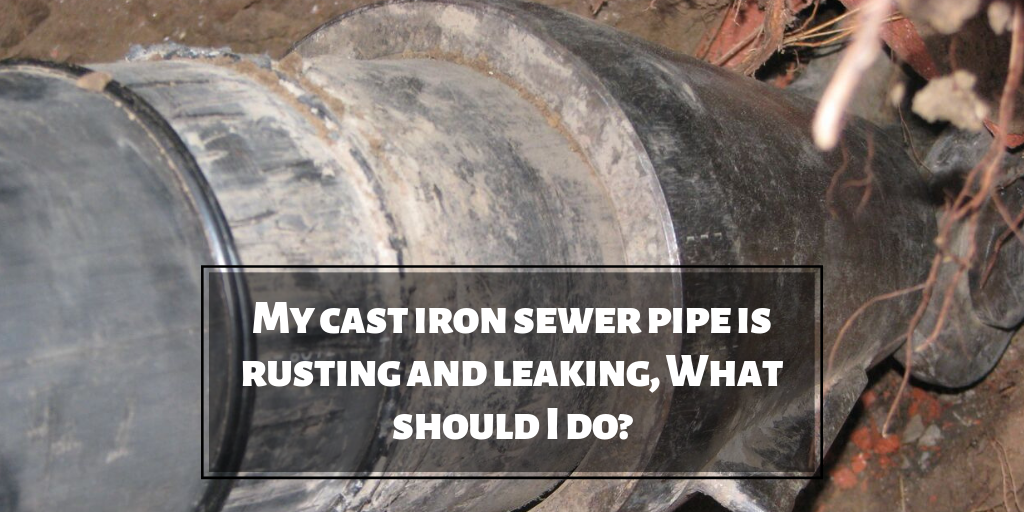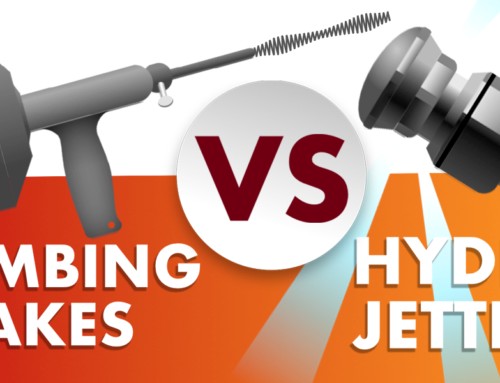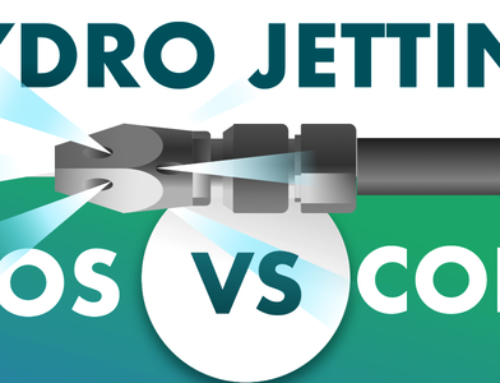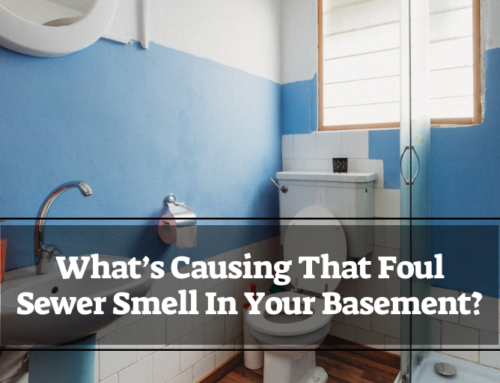Do you have a cast iron sewer pipe that’s rusting and leaking? If so, you’ve come to the right place! We’re going to go over the signs of a damaged cast iron sewer pipe and talk about the repair options available.
Prior to around 1970, cast iron was the material of choice when it came to sewer pipes because it’s strong and can last anywhere from 80- 100 years, under certain conditions.
There’s only one problem. Like all iron, it rusts.
If your home was built before 1970 your cast iron sewer pipe may be rusting and leaking already. Yes, already. The lifespan of cast iron pipes depends on a variety of factors including soil type and water quality. That means even if your pipes are less than 80 years old, they may be starting to develop rust and leaks. If your home was built in the 1930s or 40s, your cast iron pipe is reaching the end of its lifespan right now.
But, it isn’t only about rust and corrosion.
Trees can also be a factor. Over the decades their roots will eventually reach down and touch the pipes. They can even get inside them.
While you can’t actually see your cast iron pipes rusting and leaking there are a few things you can watch out for…
Signs your cast iron sewer pipe is rusting and leaking
Patches of lush, green vegetation
Humans hate sewage, but plants love it. Patches of grass or other vegetation that are greener than the rest of your lawn may indicate cracked and leaking cast iron sewer pipes.
Slow drains
Is water taking a long time to drain from your sink or toilet? If so, you could have a clogged sewer pipe. Rust and corrosion can build up inside sewer pipes and cause blockages.
Something stinks!
Cracked sewer pipes can allow foul smelling sewer gas to enter your home. If you smell something bad, it’s time to contact a professional.
Moldy walls
Even very small amounts of moisture coming from a pipe can cause mold to form.
Lawn or driveway indentations
A leaking pipe can cause pools of sewage to develop under your lawn or driveway that eventually become visible as indentations. Contact someone immediately if you see this because it could indicate a sinkhole is starting to develop.
Cracks
Cracks in your walls or foundation should be taken very seriously because they can be a sign that a sizable sinkhole has already formed under your property. Don’t delay. Call a sewer repair contractor immediately.
Puddles of sewage
Obviously, if you see actual puddles of raw sewage anywhere on your property, you have a problem with your pipes. Contact a professional right away.
Insects or rodents
Even insects like cockroaches or rats and mice could be a sign of rusting and leaking cast iron sewer pipes. You’d be surprised at how they can maneuver past the smallest of cracks in order to enter your home. If you’ve repeatedly called exterminators only to see the pests return, you might have a problem with cracked cast iron sewer pipes.
Discolored water
Are your water line pipes cast iron and the same age as your sewer pipes? If so, is brownish or yellowish water coming out of your taps? While this isn’t a direct indication that your sewer pipes are leaking, it is an indication that your water line pipes are starting to corrode. If they’re about the same age as your sewer pipes, consider this a heads-up. Problems with your sewer pipes might be just around the corner.
Repairing cast iron sewer pipe
There are three ways to repair cast iron pipe that has started to deteriorate: structural pipe lining, pipe bursting, and conventional sewer replacement. Let’s take a look at each one.
Structural pipe lining
Structural pipe lining (also called cured-in-place-pipe lining or CIPP) is a trenchless technique (i.e. minimal digging!) for rehabilitating damaged drainage pipe that has been used since the 1970s to create a brand new pipe within your old one.
The process involves soaking a felt liner in a special epoxy, inserting it into the damaged pipe, and then inflating it. After it has been left to cure for a few hours the liner is removed and your newly lined pipe is as good as new.
Structural pipe lining is quick (usually only takes hours rather than days) and cost-effective because it only requires minimal digging. However, if your damaged pipe is backpitched or has collapsed, it won’t work. In these cases, there are a couple of other options for replacing your sewer pipe: pipe bursting and conventional sewer replacement.
Pipe bursting
A collapsed sewer pipe can’t be repaired via pipe lining because it no longer has structural integrity. In other words, there isn’t anything there to line.
Pipe bursting is a trenchless technique that replaces your damaged pipe by pulling a brand new HDPE (high-density polyethylene) replacement pipe into it. The pipe is attached to a winch and a bursting head and as it’s pulled through the old pipe it breaks and replaces it.
Like pipe lining, pipe bursting requires only minimal digging – just a couple of 4ft x 4ft pits in order to access the pipe – and is cost-effective (no property damage to repair) with a quick turnaround time.
Conventional Sewer Replacement
Trenchless techniques for repairing rusting and leaking cast iron sewer pipes were a technological breakthrough. However, the damaged pipe needs to have a certain amount of structural integrity for them to work. For example, pipe bursting replaces damaged cast iron pipe with a new, HDPE pipe. However, it won’t work if the damaged pipe is so badly deteriorated that it’s impossible to feed the ‘’pulling cable’’ through the pipe. In this case, the only option is conventional sewer replacement and that means digging.
Also, if your damaged pipe is backpitched or collapsed, it will need to be replaced using conventional sewer repair methods.
We’re Sewer Pros, a licensed and insured sewer repair and replacement contractor serving both Los Angeles and Orange County. We cctv sewer inspections specialize in trenchless methods including pipe lining, pipe bursting, and spray lining. Contact us today by calling (310) 208-0525 and find out how we can save you both time and money!








Leave A Comment